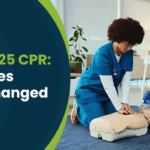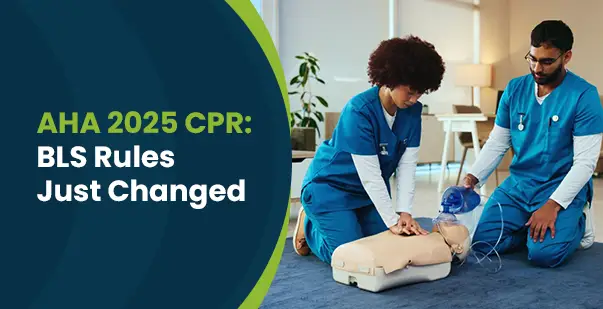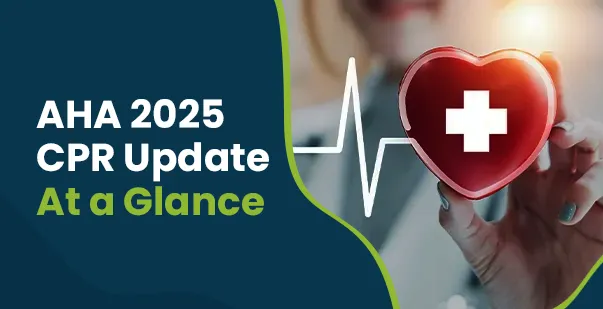Rescue breathing is a first aid technique for individuals who have stopped breathing. It involves blowing air into a person’s mouth to supply oxygen and is part of cardiopulmonary resuscitation (CPR). The technique can vary depending on whether it is performed on an adult or a child.
Immediate CPR improves the chances of survival during a cardiac arrest emergency. It provides oxygen-rich blood to the heart and brain. Choking, breathing difficulty, and fainting are the most commonly reported indications that need first aid. This is where rescue breaths come to the rescue.
But is it effective during CPRs? We will discuss rescue breaths and their importance more below.
Understanding Rescue Breathing
Rescue breathing is a technique for forcing air into a person’s lungs when they stop breathing due to cardiac arrest or airway obstruction. Health professionals also refer to this breathing rescue technique as mouth-to-mouth resuscitation.
You can give a rescue breath by exhaling into the mouth or nose of the victim. However, it is crucial to use barrier protection between the rescuer and the victim for better results.
A person may need rescue breaths in the following situations:
- Near drowning
- Overdose or poisoning
- Choking
- Carbon monoxide poisoning
- Severe asthma attack
- Conditions like asthma or pneumonia
- Electric shock
- Inhalation injuries
Rescue breathing for adults differs from CPR techniques for infants and children.
Read More: CPR Compression Rate for Infants & Children
Steps for Effective Rescue Breathing in Adults
Rescue breath types in adults involve several crucial steps. Learning them properly ensures an effective CPR process. These steps include:
- Call 911
If you see someone who is unresponsive and isn’t breathing, call 911. If you are in a group, ask another person to call while you proceed to the next step.
Be aware of the following in a situation where someone isn’t breathing but has a pulse:
- Someone who isn’t breathing may make occasional gasping sounds. This is not the same as normal breathing.
- Respiratory arrest may happen before cardiac arrest. Begin CPR immediately if you notice that the person’s pulse has stopped.
- Open the Airway
This is the next crucial step in the rescue breath processes. Ensure the person’s airway is open and clear to give rescue breaths. Do the following to open the victim’s airway:- Place your hand on the victim’s forehead.
- Gently tilt their head to the back.
- Use your other hand’s fingers to lift their chin upward.
- Check the Breathing
Once the airway is open, check the victim’s breathing. Watch, listen, and feel for signs of breathing, such as chest movement, airflow against your cheek, or exhalation sounds. If the person is not breathing or is only gasping, you must give rescue breaths. - Deliver Rescue Breath
You can proceed to give rescue breaths once the airway is open. Now, do this:- Use the fingers of your hand to pinch the victim’s nostrils shut. This will prevent air from escaping through the person’s nose.
- Cover the victim’s mouth with yours to form a seal so that air doesn’t escape.
- Give rescue breaths by breathing into their mouth slowly. A rescue breath should last for at least 1 second. Try giving a rescue breath every 5-6 seconds. It makes for around 10 to 12 breaths per minute.
- Check if the person’s chest rises when you give the first rescue breath. Repeat step 2 (open the airway) if it does not happen. You must follow this process before giving additional rescue breaths.
- Continue to give rescue breaths until emergency medical services (EMS) arrive. It would help if you did this until the person begins breathing normally on their own.
- Adjust Ventilation and Monitor Response
In some instances, rescue breathing alone may be sufficient. However, if the person does not have a pulse or their heart rate is below a certain threshold, chest compressions may need to be incorporated into the CPR sequence. The ratio of rescue breaths to chest compressions differs depending on the victim’s age.
Monitor the victim’s response throughout the process. Observe signs of chest rise with each breath and check for indications of improvement, such as a return of spontaneous breathing or a palpable pulse. If the person’s condition deteriorates or their responsiveness changes, you may need to perform the technique again.
Read More: Ensuring the Effectiveness of Chest Compressions During CPR
Rescue Breathing for Children
The steps for rescue breathing in infants or children are similar to those for adults, but there are some important differences to consider.
The technique for rescue breaths can depend on the size of the child:
- Infants and Small Children
When delivering rescue breaths, form a seal around the child’s nose and mouth. If you find the process challenging, try a mouth-to-nose or mouth-to-mouth technique. - Older Children
Use the mouth-to-mouth technique. The number of breaths required is higher for infants and children than for adults. This involves giving 12-20 rescue breaths per minute for an infant or child who isn’t breathing, which translates to one rescue breath every 3-5 seconds.
Importance of Rescue Breathing in CPR
When the human body stops breathing, the oxygen supply decreases, which may lead to a life-threatening situation. Rescue breathing is important for effective CPR because it helps restore ventilation and provides oxygen to the person’s lungs.
Its additional benefits include:
- Provides Essential Oxygen
Rescue breathing supplies oxygen to the victim’s lungs. It is critical for their survival, especially when the person cannot breathe on their own. Rescue breaths also deliver oxygen directly into the lungs. This helps maintain blood oxygen levels and prevent hypoxia (oxygen deprivation). Failing to do so can lead to organ damage or brain injury. - Prevents Brain Damage
The brain is highly sensitive to oxygen deprivation. A rescue breath provides the necessary oxygen to the brain, reducing the risk of permanent brain damage due to lack of oxygen. Rescue breathing helps ensure the circulation of oxygen-rich blood throughout the body. Thus, it supports several vital organs like the brain. It is more effective when combined with chest compressions. - Sustains Life Until Professional Help Arrives
Rescue breathing can sustain life until emergency medical services arrive. This first-aid skill can help a patient breathe again and maintain their condition until professional help takes over. It is crucial in situations like drowning, choking, or respiratory arrest. Learning and performing rescue breathing can increase the chances of survival and reduce long-term damage. - Requires Minimal Equipment
Rescue breathing is an important component of CPR. Effective CPR, including rescue breaths, can increase the chances of survival in cardiac arrest or respiratory failure situations. The best part about this CPR technique is that it requires no specialized equipment. This makes it an accessible and essential skill for bystanders and first responders in emergencies.
Is Rescue Breathing Different From CPR?
You can give rescue breaths alone or as a part of CPR, which often leads to confusion about whether the two techniques are different.
Rescue breaths become crucial when a person isn’t breathing but has a pulse. Yet, you need CPR for a different reason. This involves giving chest compressions if a victim’s heartbeat and breathing have stopped. CPR may include rescue breathing, but the latter may not include CPR in all cases.
Situations Where You Should Not Do Rescue Breathing
There are instances when rescue breaths should not be performed. This is applicable when performing rescue breathing as part of CPR.
The guidelines include:
- People without CPR training should give hands-on CPR, which involves only chest compressions without rescue breaths. Perform quick, uninterrupted chest compressions until help arrives.
- According to the ABCs of first aid (airway, breathing, and compressions) or the CAB (compressions, airway, breathing) sequence, chest compressions should be done before rescue breathing.
Final Thoughts
Rescue breathing is a crucial CPR technique that aims to restore ventilation and deliver oxygen to a victim who is not breathing. Understanding the importance of rescue breathing and acquiring the necessary skills can make a significant difference in emergency response situations. The benefits of this technique prove that it is necessary for effective CPR.
The best way to learn about giving such rescue breaths is through training sessions and courses. Prompt rescue breathing and monitoring of a victim are essential for positive outcomes. Choose a course for your training needs and become proficient in rescue breathing techniques now!









